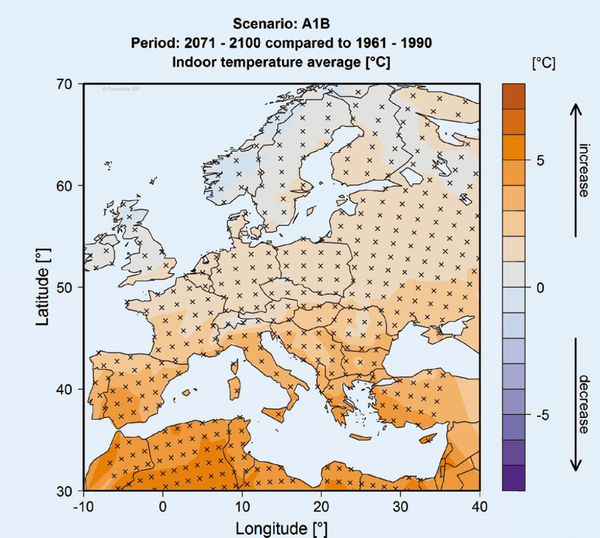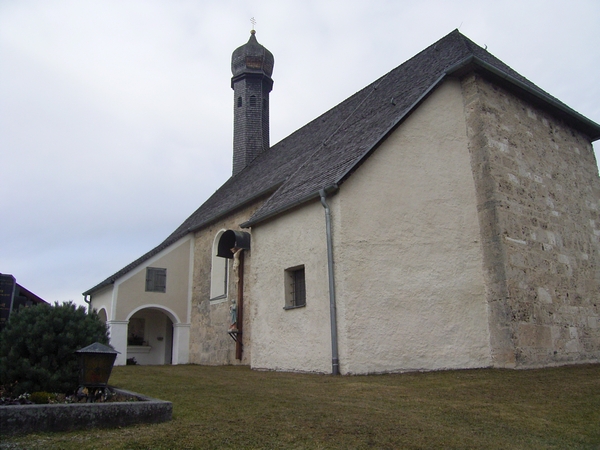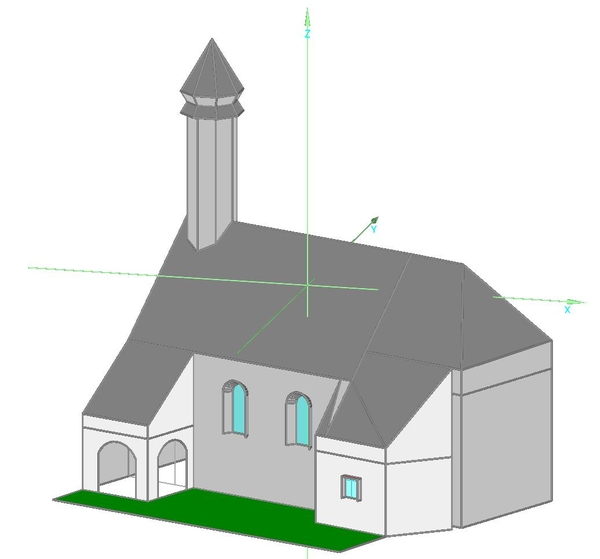One of the partners uses global climate models to downscale climate predictions via regional climate models to obtain high-resolution climate data for the whole of Europe. The first task was to find out whether the simulated climate data could be applied to hygrothermal building simulation. For this purpose, historical long-term and short-term measurements of weather data in various European locations were compared with simulated climate data for the period between 1960 and 1990. The comparison spans different time scales, from long-term averages to diurnal fluctuations in climate parameters. Data sets for two emission scenarios were generated and converted into weather data sets for hygrothermal building simulation in Europe. To do this, hourly values were calculated for more than 900 sites 120 kilometers apart from one another over a period of 30 years for 1960-1990, 2020-2050 and 2070-2100.
As a result, the anticipated indoor climate can now be mapped for Europe and the probability of damage occurring can be forecast for different types of damage. Changes between current values and future predicted values can also be displayed in maps.
Together with another project partner, these simulations, which required extensive computing time, were implemented to develop a new inverse modeling approach for unheated buildings via a state space model. This allows the resulting indoor climate to be rapidly determined for each type of building studied throughout the whole of Europe.
To further investigate hygric and thermal conditions on and in building components with regard to energy requirements for heating, cooling, humidification and dehumidification, dynamic hygrothermal building simulation is necessary. Purely thermal simulation environments, which do not take into account either the moisture exchange or the transport processes taking place in the surfaces enclosing a space, yield incorrect results when calculating the humidity of the ambient air. This would lead to an incorrect assessment of the probability of damage occurring.


